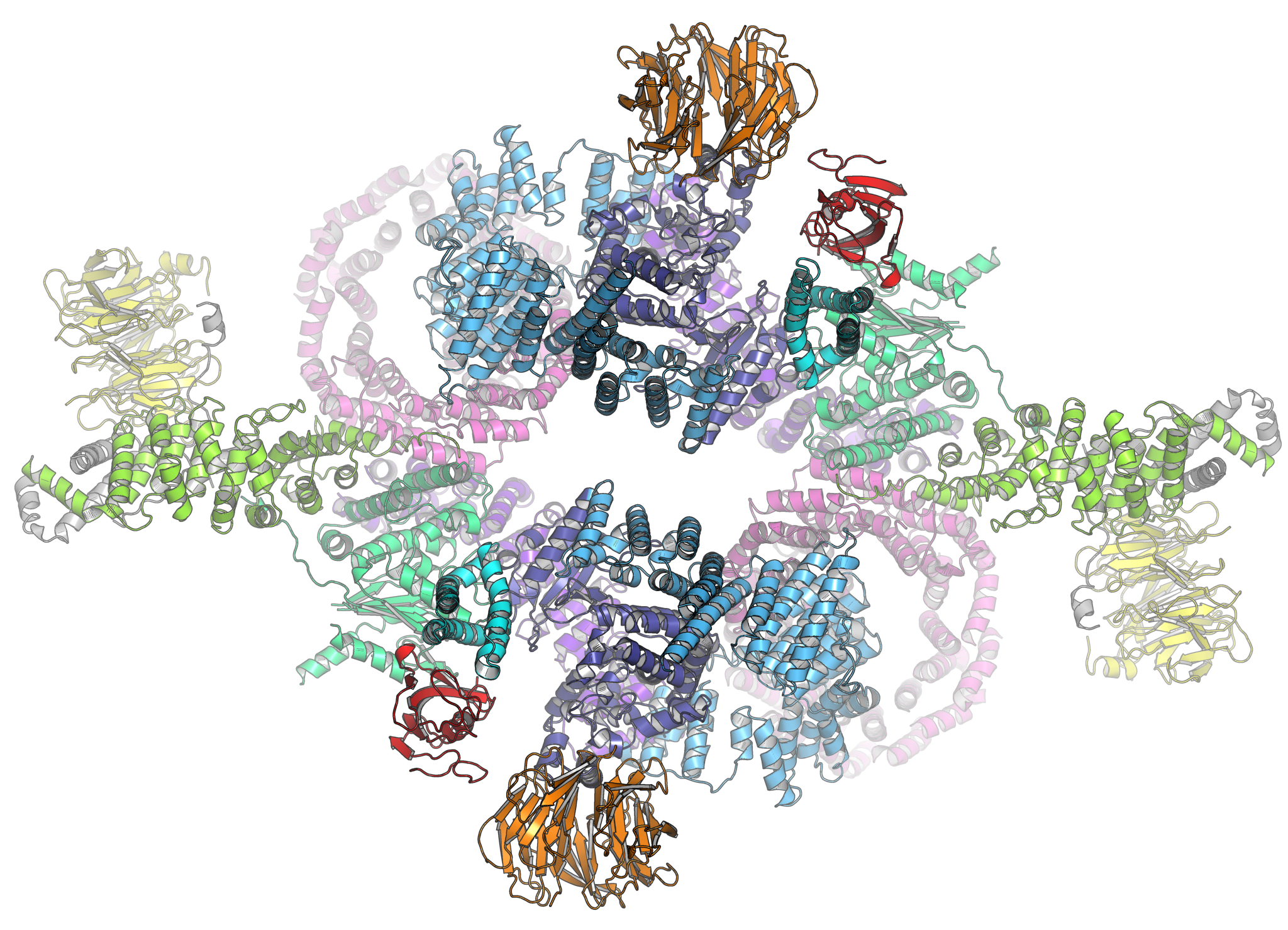Mammalian Target of Rapamycin (mTOR)
TOR, the target of the immunosuppressant drug rapamycin, is a conserved protein kinase and central controller of cell growth, which forms two structurally and functionally distinct complexes: TORC1, characterised by the presence of the companion protein Raptor, and TORC2.
Dysregulation of mammalian TOR (mTOR) signaling is implicated in major diseases including diabetes, cancer, and neurodegeneration, while Rapamycin is an important drug in frequent clinical use, in particular for kidney transplant patients.
Scientists in the Ban lab, in collaboration with researchers in the Maier and Hall groups in Basel, resolved the architecture of human mTORC1 bound to FKBP–rapamycin, by combining cryo–electron microscopy at 5.9 angstrom resolution with crystallographic studies of the companion protein Raptor at 4.3 angstrom resolution (external page Aylett et al. 2016).
Our structure explains how FKBP-rapamycin and architectural elements of mTORC1 limit access to the recessed active site, and suggests a mechanism for the role of Raptor in substrate recognition and delivery: the conserved amino-terminal CASPase-like domain of Raptor is juxtaposed with the kinase active site.
